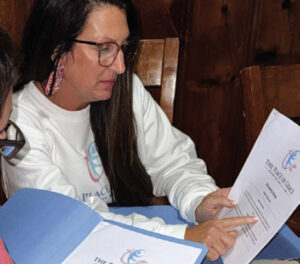Rain to blame for late season turf problems
By By Steve Strong / area horticulture extension agent
Oct. 30, 2002
Abundant rainfall is a welcome blessing after such a hot, drought-ridden summer, but it could be too much of a good thing this fall for home lawns.
Warm season grasses that were on the verge of winter dormancy are having a tough time adjusting to all of the extra moisture that Mother Nature has so lovingly poured out upon East Mississippi.
October is typically the driest month of the year, providing no more than a couple of inches of rainfall if we are lucky.
However, local weather sources report that nearly 10 inches of wet stuff has fallen on our area this month 3 inches just this week. That's about five times the amount that turfgrass is accustomed to this time of year.
The result is waterlogged soil, where water has squeezed out most of the oxygen that plant roots use to respire (roots breathe air just like our lungs). After several hours or several days without enough oxygen, grass roots begin to suffocate and healthy, green leaves turn yellow and die.
Lay off the fertilizer
Leaves begin to rot and cause a thatch buildup, making it even harder for air to flow through the grass blades and stems. Disease-causing fungi also get started in the cool wet weather, creating more yellowing and dieback problems.
Brown patch fungus is the most prevalent turf disease of centipede and St. Augustine grasses; it occurs during both the fall and spring transitions warm to cool, cool to warm.
It starts as small, circular yellow spots that grow larger as the center dies out; it can spread across an entire lawn if weather conditions are right.
Over-use of nitrogen fertilizers, especially when applied between August and April, make brown patch worse. The same applies to take-all root rot on St. Augustine and melt-out fungus on Bermuda.
When turf is in a phase of either trying to go dormant (fall) or greening up (spring), the grass is in a weakened state that makes it more prone to pest attack so lay off the fertilizer during the off-season.
In accordance with the famous Plumber's Motto, "Stuff don't run uphill," the recent rainfall will likely carry over-applied nitrogen to the lowest parts of the lawn. Those are the areas where yellowing from poor drainage and fungus attack will show up first.
Test your turf
The best way to determine whether your lawn has a fungus disease is to submit grass samples to your county Extension office for a lab test. The plant pathology laboratory at Mississippi State University charges $6 per sample, and provides recommendations for treatment and prevention of all kinds of plant disease turf, vegetables, or ornamentals.
The county Extension office has plenty of publications available on managing home lawns, including tips on disease and insect control. Pick up a free copy when you visit the office, or access the MSU Web site online at www.msucares.com.
Ryegrass alert
On a different note, ryegrass growers are seeing some problems this fall, too. Folks planted winter pastures and deer food plots early in September since the rain came sooner than usual, not realizing that the previous dry weather had promoted a bumper crop of armyworms.
Usually a major problem on late summer Bermuda pastures and athletic fields, the armyworms moved from the parched, nutrient-poor Bermuda grass to the newly sown, well-fertilized ryegrass fields.
Armyworms are small caterpillars found in a variety of colors, light-tan to green or nearly black (camouflaged), and tightly coiled to resemble an old bird dropping.
They can be controlled with a range of insecticides (carbaryl or liquid Sevin, acephate, diazinon, or thuricide), but early control is the key. Once the grass is eaten to the ground, replanting is the only option.
If your ryegrass put out a good stand early, only to disappear a few days later, apologize to your county farm supply dealer for accusing him of selling bad seed, and start searching for the real culprit. Contact the county Extension office for more help.













